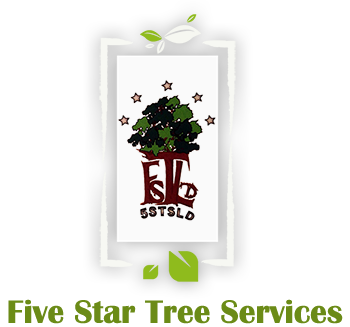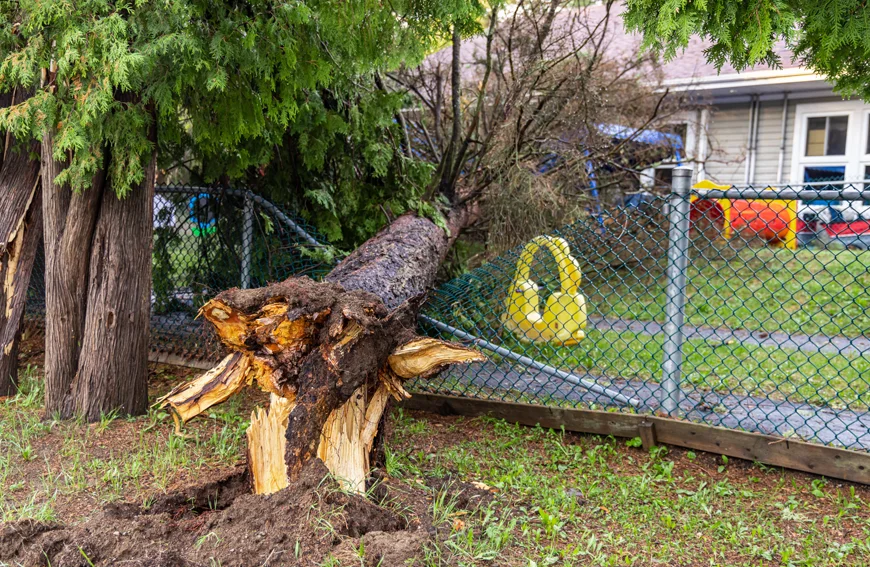Trees enhance the value and beauty of any property, but when a neighbour’s tree starts to affect your land, it can lead to serious concerns. Whether it’s intrusive roots damaging your driveway or overhanging branches threatening your roof, understanding how to deal with these issues is essential to protecting your property—and your relationship with your neighbour.
Signs of tree-related damage
When a tree from next door encroaches on your property, the damage can be subtle or significant. Watch for these signs:
- Overhanging branches scraping windows or blocking sunlight
- Fallen debris such as leaves, twigs, or acorns cluttering your yard
- Roots lifting sidewalks or driveways, or damaging underground pipes
- Branches or tree limbs falling onto your roof or other structures
- Increased pest activity attracted by the tree’s proximity
Take clear photos of the issues and keep written records in case the situation escalates.
Know your rights
As a homeowner in Ontario, you have the right to trim branches or roots that cross your property line—provided you don’t damage the overall health of the tree. However, it’s vital to be cautious when pruning, as cutting large limbs or roots can harm or even kill a tree, which could make you liable for damages.
Many municipalities also have tree protection by-laws in place. Some trees may require permits before any significant pruning or removal. Consulting your local by-law office or a professional arborist can help ensure compliance.
Communication is essential
Often, the best first step is simply talking to your neighbour. They may not be aware that their tree is affecting your property. A polite, friendly conversation can go a long way and may even lead to a mutual agreement to share the cost of trimming or removing the tree.
Addressing the problem early can help preserve both your property and your neighbourly relationship.
Who’s responsible for damages?
If a healthy tree loses a branch during a storm and it lands on your property, it’s typically considered an “act of God,” and you’d be responsible for the cleanup. However, if the tree was diseased, dying, or visibly hazardous and your neighbour ignored it, they could be held liable for any resulting damage.
To establish responsibility:
- Document concerns with photos and dated notes
- Notify your neighbour in writing if the tree appears hazardous
- Get a professional assessment from a certified arborist
- Review your homeowner’s insurance for coverage and support
In some cases, your insurance provider may pursue compensation from your neighbour’s insurer if negligence is proven.
When to call a tree expert
If you’re dealing with a potentially hazardous or damaging tree, it’s best to contact a certified arborist. Five Star Tree Services can assess the health and stability of the tree, determine the risk, and recommend safe solutions.
A professional arborist can:
- Evaluate the tree’s condition
- Provide written assessments for legal or insurance purposes
- Safely prune or remove trees
- Ensure all work follows local laws and safety standards
Legal recourse as a last resort
If discussions with your neighbour don’t resolve the issue and the tree continues to pose a threat or causes ongoing damage, legal action might be necessary. A property lawyer can help you understand your rights and build a case if needed. Make sure your records include professional evaluations, photos, and correspondence to support your claim.
Trust Five Star Tree Services to protect your property
Trees are an important part of our neighbourhoods, but when they grow beyond their bounds, they can lead to costly problems. At Five Star Tree Services, we’re committed to helping homeowners across the GTA manage tree-related concerns quickly, safely, and professionally. Whether you need expert pruning, root management, or complete tree removal, we’re just a call away.
Call us today at (416) 990-3355 or get in touch online to schedule an assessment.


